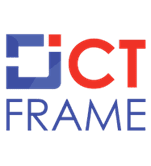Social Security Allowances Can Now Be Paid and Renewed Online
10th October 2025, Kathmandu
The introduction of the Social Security Allowance Distribution Procedure, 2082 (Nepali year), which was approved by the Home Minister, marks a pivotal moment in the delivery of social welfare in Nepal. By repealing the previous 2077 procedure, the government is solidifying its commitment to a technology-friendly approach aimed at significantly enhancing efficiency and accountability.
Social Security Allowances Renewal
The transition to a fully digital, transparent, and accountable system is expected to eliminate systemic weaknesses and ensure that benefits reach the intended recipients without leakage or undue influence. This comprehensive overhaul impacts all aspects of the allowance distribution lifecycle, from application and renewal to the final payment and reconciliation.
Key Pillars of the New Digital Procedure
The core of the Procedure, 2082, rests on several interlinked technological and procedural reforms designed to create a robust and modern social safety net.
1. Mandatory National ID and Biometric Verification
One of the most critical and modern aspects of this new procedure is the mandatory integration of the social security allowance system with the National ID (NID) system.
- Purpose of Biometric Linkage: The requirement for online applications to be linked to the beneficiary’s National ID, complete with biometric details, is a direct measure to combat the long-standing issues of duplication and payments to ineligible individuals. The National ID, issued by the Department of National Identity Card and Civil Registration (DONIDCR), contains unique demographic and biometric data (photo and fingerprints), making it a reliable tool for identity verification.
- Verification Process: The system now leverages the NID database for unique identification. This interoperability between the Social Security Allowance (SSA) system’s Management Information System (MIS) and the National ID/Civil Registration (CR) system ensures that only genuinely eligible citizens, whose identities are biometrically authenticated, can successfully register or renew their claims. This digital “de-duplication check” is a crucial step towards greater leakage control.
- Application and Renewal: Eligible citizens can now apply or renew their status online, a significant shift from the previous manual, paper-based, and local-level intensive processes. This online submission, anchored by the NID and its biometric data, streamlines the initial intake and verification phase, moving the system out of the traditional reliance on paper-based rosters maintained at local level offices.
2. Shift to Direct Bank Account Payments (Digital Disbursement)
The new procedure completely overhauls the payment mechanism, moving away from local government cash distribution, a method prone to delays and irregularities.
- Treasury and Controller of Accounts Role: Allowance payments will now be directly deposited into the beneficiaries’ bank accounts. This centralization of disbursement through the Treasury and Controller of Accounts ensures that funds are transferred efficiently and transparently, bypassing several layers of manual handling at the local government level.
- Elimination of Cash Distribution: The elimination of cash payments by local governments directly addresses historical problems, such as alleged political influence and misappropriation of funds at the local level. This switch not only increases accountability but also promotes the broader national agenda of financial inclusion and digital transactions.
- Financial Inclusion Impact: For many beneficiaries, receiving their allowance directly into a bank account serves as a gateway to the formal financial sector, giving them access to other banking services.
Mechanisms for Enhanced Accountability and Integrity
The Procedure, 2082, is not just about digitization; it also introduces structural changes to bolster governance and oversight, aiming to reduce all forms of irregularity and fraud.
1. Explicit Ineligibility Criteria
To prevent double-dipping and ensure that the allowance only supports citizens who truly need it, the new procedure clearly specifies categories of individuals who are ineligible to receive the social security allowance. This includes:
- Individuals currently in government service.
- Individuals currently receiving pensions from government sources.
- Individuals attempting to claim double benefits from the social security system.
By linking eligibility checks to the NID and other administrative databases, the system can perform real-time cross-referencing to enforce these exclusion criteria automatically, which is a major enhancement in administrative efficiency.
2. Deceased Beneficiary Fund Management
A notable feature for improving fund accountability is the provision regarding deceased beneficiaries.
- Preventing Fraudulent Claims: The procedure ensures that payments are not sent to deceased beneficiaries, addressing another significant source of leakage in the previous manual system.
- Consolidated Fund Return: Any remaining funds intended for a deceased beneficiary will be returned to the federal consolidated fund. This clear, auditable process closes a major loophole and ensures public money is accounted for and recovered.
3. New Governance and Oversight Structure
The establishment of three-tier facilitation committees and the requirement for quarterly reviews to be presented at local assemblies institutionalizes a new layer of oversight. This ensures continuous monitoring of the system’s performance, allowing for issues to be flagged and addressed quickly, and promotes democratic accountability by involving local representatives in the review process.
Provisions for the Most Vulnerable
Recognizing that a purely digital system can pose challenges for certain groups, the procedure includes specific facilitation measures to ensure inclusivity and accessibility.
- Special Facilitation: For senior citizens aged 90 years or above and persons with severe disabilities, the digital requirement is mitigated by offering facilitated payment options.
- Access Options: These vulnerable individuals can receive their payments through:
- ATMs (if able to use them).
- Mobile Banking services.
- Cash Payment Camps that will be specially organized to bring the service directly to them.
These dedicated arrangements are vital to prevent the digital divide from excluding the most marginalized and deserving beneficiaries from accessing their essential allowances. The overall impact of the Procedure, 2082, is to create a social security framework in Nepal that is not only robust and technologically advanced but also fair and accessible to all eligible citizens, setting a new benchmark for good governance and public service delivery.
For More: Social Security Allowances Renewal






